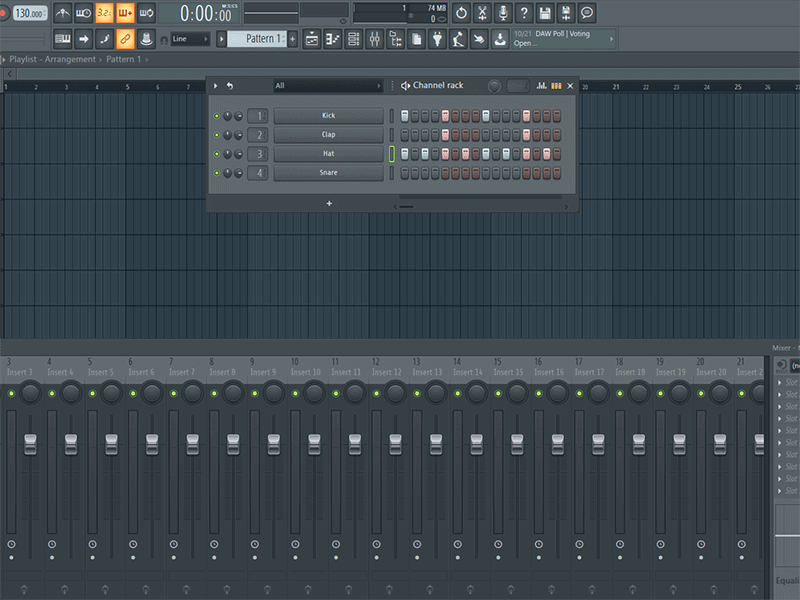

Following the same method as above, under Hats you will find two samples called Linn CH and Linn OH. Again, we want to look for something realistic sounding.

Simply click and drag it into your Channel rack over the default kick channel. This will bring up a list of kicks to choose from. From that menu, select Packs, then Drums, and then Kicks. A menu should pop up if it wasn’t already at the front.

To access your kicks select the Browser/Plugin picker at the top toolbar. Many house tracks will use realistic sounding drum samples. We want the kick to be punchy, but not synthetic sounding. To keep us on the same page, we’ll work with native FL Studio samples only.įirst, we need to choose a kick. Now that we’ve got a basic idea of how the step sequencer works, we can move on to selecting our drum samples. When you have lots of channels listed in the channel rack, it can be useful to sort them into categories for more efficient workflow. Click on the buttons to trigger the sample at that point in time. Each button represents a 16th note, or step. Click on the same one twice to select all channels.
These rectangles can be used to select channels to perform operations on. They can be samples, plugins, automation clips, etc. Click to mute, and right-click and select “solo” to play just that channel. These green buttons can mute or solo individual channels. Panning is a way to control how much volume the right and left speakers get. This column of knobs controls individual channel panning. This column of knobs controls individual channel volume. This column of numbers is where you can assign each channel to a Mixer track. We’ll leave it on the default view for now. This button toggles between Step Sequencer view and Piano roll view for each channel. We’ll leave it at the default setting, 0% (far left), for now. Swing slider – this gives the drums a more organic sound. In the next picture, we can see a default Step Sequencer that I’ve marked up with numbers. First, open the Step Sequencer/Channel rack by clicking the button on the top toolbar in FL Studio. To make a good drum loop, we’ll need to understand how it works first. The Step SequencerįL Studio’s Step Sequencer/Channel rack is great for programming house drums. In this house drums tutorial, we’ll cover how to make a drum loop using the FL Studio 12 Step Sequencer, and what you can do to add a bit of your own spin to the mix. They hold the song together, provide structure and rhythm, and tell the audience when to dance, jump, and shout. Technique 3: Variation With Hats, Kicks, and Snaresĭrums and percussion are an integral part of any electronic music composition. Technique 1: Add Blips, Pings, Taps, or Snaps.







 0 kommentar(er)
0 kommentar(er)
